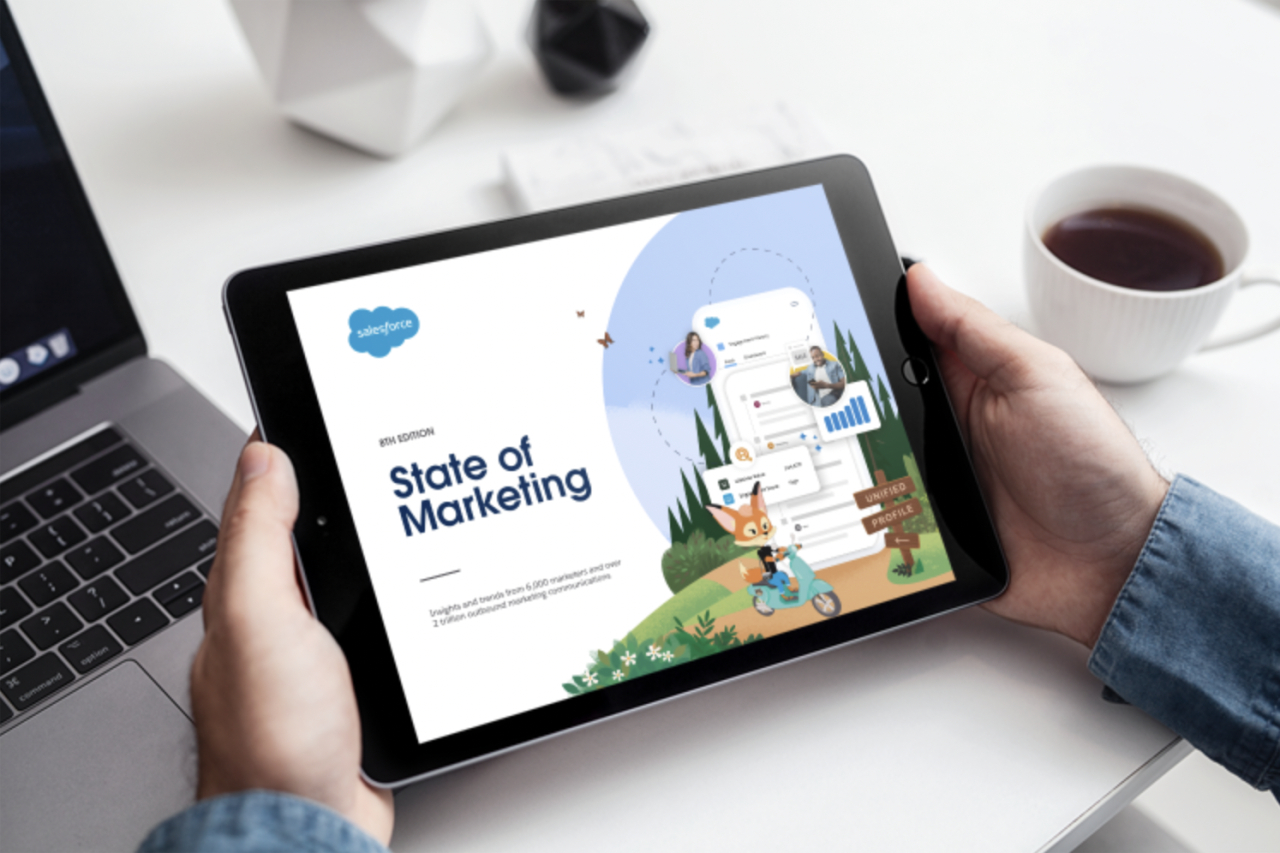Salesforce Research: 87% Of Marketers Say Their Work Provides Increasing Value
- Written by Kelly Lindenau
- Published in Industry Insights
As 91% of CMOs believe they must continually innovate to remain competitive, Salesforce’s eighth annual “State Of Marketing Report” uncovered that the onus of that innovation falls on the shoulder of marketers. But despite the heavier workload, marketers are hopeful — 87% said their work provides greater value now than a year ago, representing a 10% increase from last year’s survey.
“Amongst many headwinds, marketers are still optimistic,” said Jay Wilder, VP of Product Marketing for Salesforce, in an exclusive interview with Demand Gen Report. “Marketers are often the ones who help the company navigate, and they’re leading the way through strategy, technology, tools and data while also being real with messaging and the company’s values.”
However, despite embracing leadership roles with grace, there are still several challenges marketers are contending with. According to the report, ineffective use of technology was the No. 1 pain point marketers cited this year, followed by:
2. Measuring marketing ROI/attribution;
3. Balancing personalization with customer comfort levels;
4. Building/retaining trust with customers; and
5. Resistance to new marketing strategies/tactics.
“Every marketer today is faced with watching and spending every dollar wisely — one in three marketers are seeing measurable budget constraints,” explained Wilder. “We’re going to see more investment in customer data management technologies to facilitate real-time personalization, as well as continued investment in intelligence and analytics.”
Throughout this research recap, we’ll specifically drill into challenge No. 3 — balancing personalization with comfort — by highlighting the top delivery channels and new content innovation strategies, with a focus on allocating data investments to increase relevance while keeping privacy in mind.
Creating A Connected Experience Across Multiple Delivery Channels
“Email continues to be the workhorse of marketing engagement,” said Wilder. “While other channels continue to grow, email remains dominate — across trillions of outbound messages, 80% are driven by email.”
However, the channel’s popularity naturally raises challenges of differentiating content and remaining competitive. To help stand out in the oversaturated email marketplace, Wilder suggested practitioners innovate their outboxes by:
- Making content interactive;
- Leveraging AI to test email content; and
- Triggering more real-time email messaging.
Following email, marketers’ other top engagement channels include:
- Pre-produced video (89%);
- Livestream video (89%);
- Interactive content (83%);
- Influencer marketing (72%); and
- User-generated content (68%).
“We're seeing more investment in digital content, but it's not your mom or dad's digital content — it’s newer and more interactive,” explained Wilder. “There’s some healthy competition between pre-produced videos and livestreamed content, but I think the one to watch out for is over the top (OTT) messaging and chat platforms, such as WhatsApp. Those channels are becoming more interesting as we start to focus on enriching the mobile experience and making it a more connected part of the buyer’s journey. OTT platforms are more composable than traditional SMS and MMS.”
However, Wilder cautioned against marketers leveraging each channel in isolation. He explained that marketers need a singular view of the customer to orchestrate a journey across all channels that they can evolve based on interactions. Luckily, the report found that marketers are making progress in multichannel delivery: 86% of high-performing marketers said they engage customers in real time across multiple channels and adapt their strategy and tactics based on customer interactions.
Contending With Changing Privacy Regulations
Although it seems Google keeps crying wolf about the depreciation of third-party cookies, the tech giant said it’s officially going to commence the phase-out in 2023. Although all marketers received that memo, the research found that 75% are still investing in the third-party arena.
In more promising news, 68% of marketers managed to fully shift away from third-party resources, which Wilder explained will provide prospects with a more consented and preference-based relationship rather than data collection and targeting without explicit consent. As marketers continue to prepare for the elimination of third-party data sources, they’re investing in:
- Information-sharing incentives for customers (56%);
- First-party data strategies (54%);
- Second-party data-sharing agreements (52%);
- New technologies, e.g., a customer data platform (CDP) (51%); and
- Reducing internal data silos (49%).
“A major investment area continues to be around CDPs as a centralized place to connect identity, behavioral, consent and privacy data so that it can be centrally managed and governed,” said Wilder. “Having that ability to control that data in one place and set out scalable rules for its use is going to continue to be kind of a top-of-mind movement for customers.”
Looking ahead into 2023, Wilder explained successful marketing in 2023 includes:
- Identifying ways to lower customer acquisition costs;
- Working to get more out of existing customer relationships;
- Investing in centralized data to that helps paint a cohesive buyer profile in real-time; and
- Increasing reliance on AI to scale in an era of more customer needs.
For more information and full insights into the current state of B2B marketing, download the eighth annual “State Of Marketing Report” the eighth annual “State Of Marketing Report” now.


